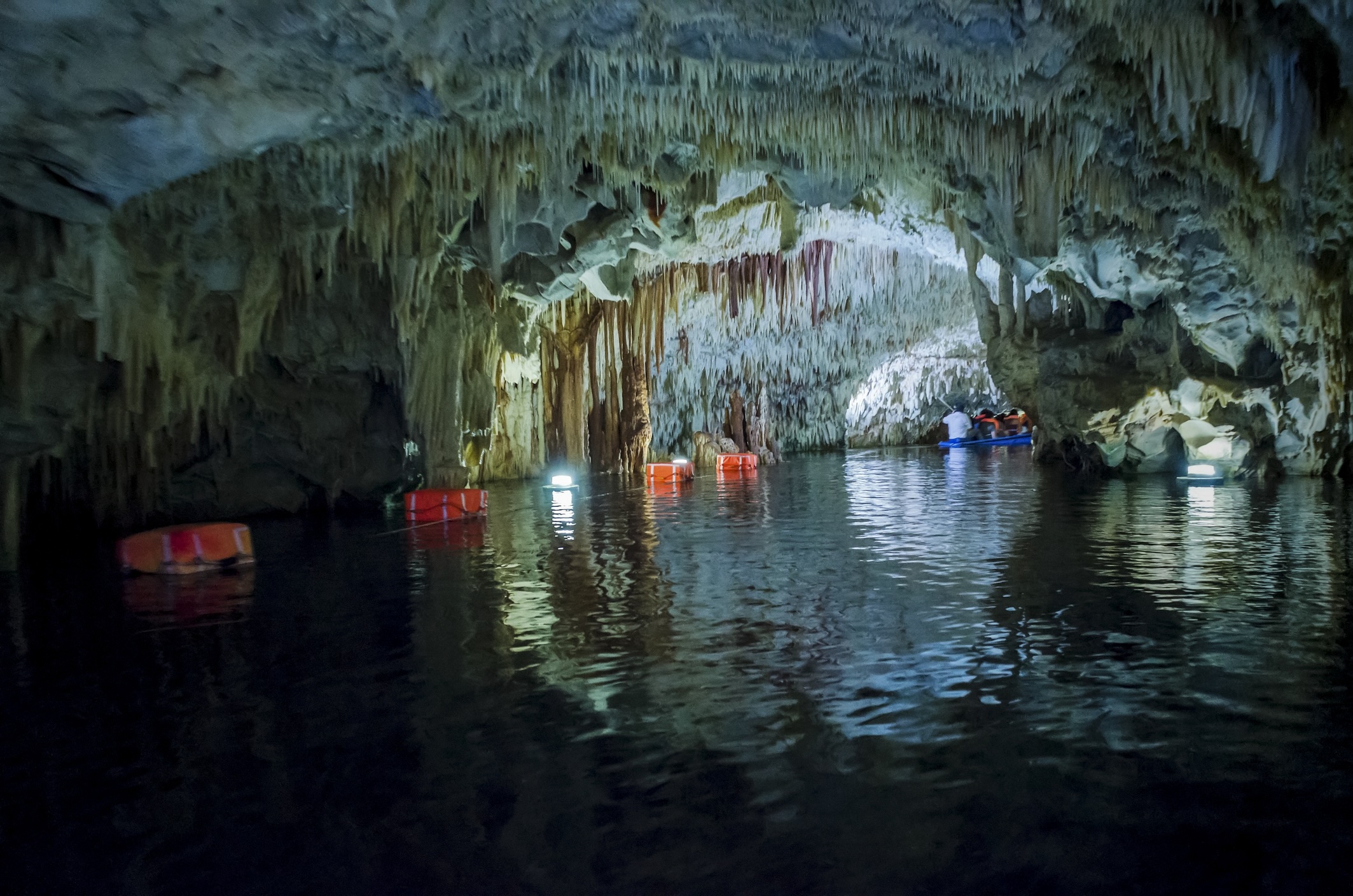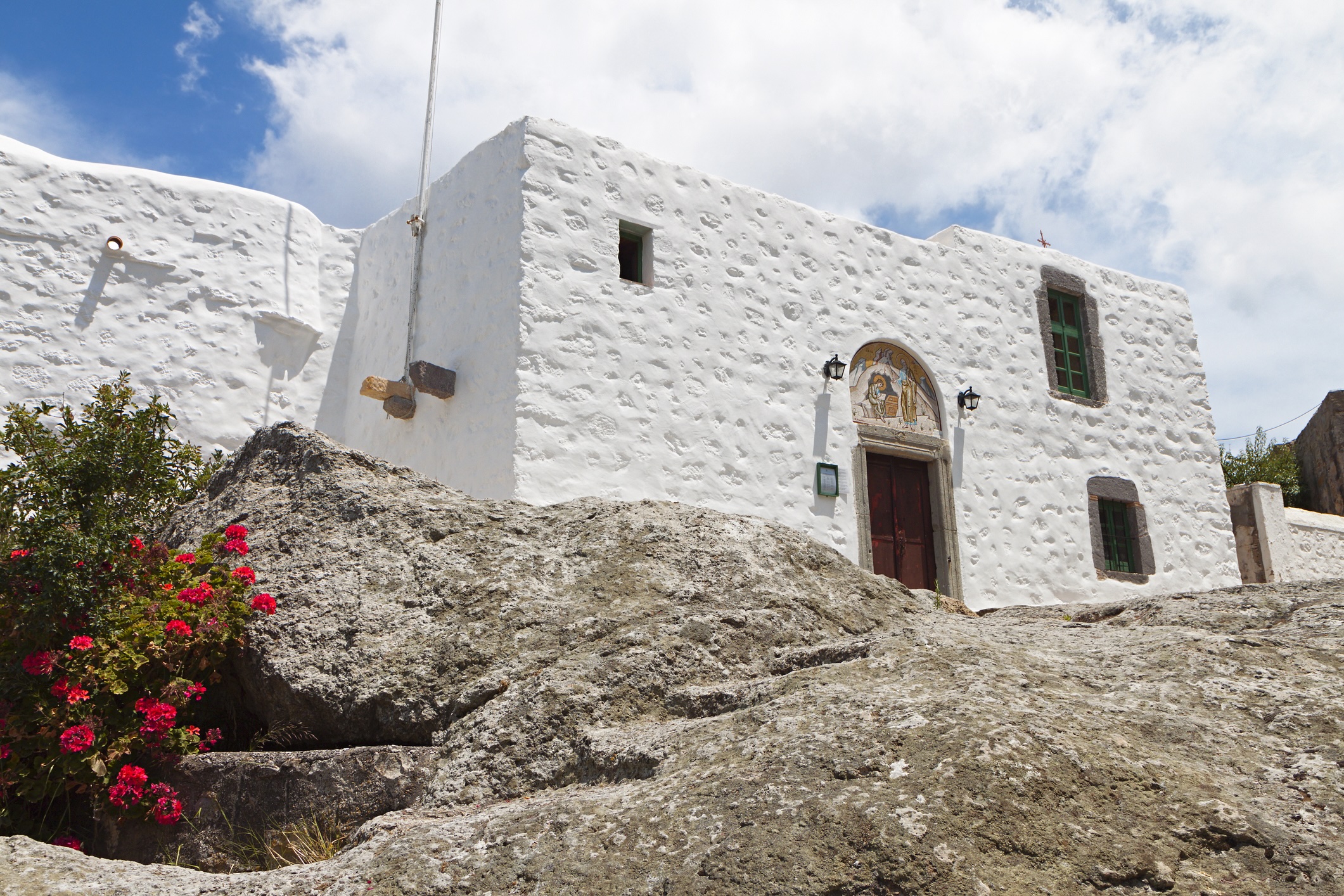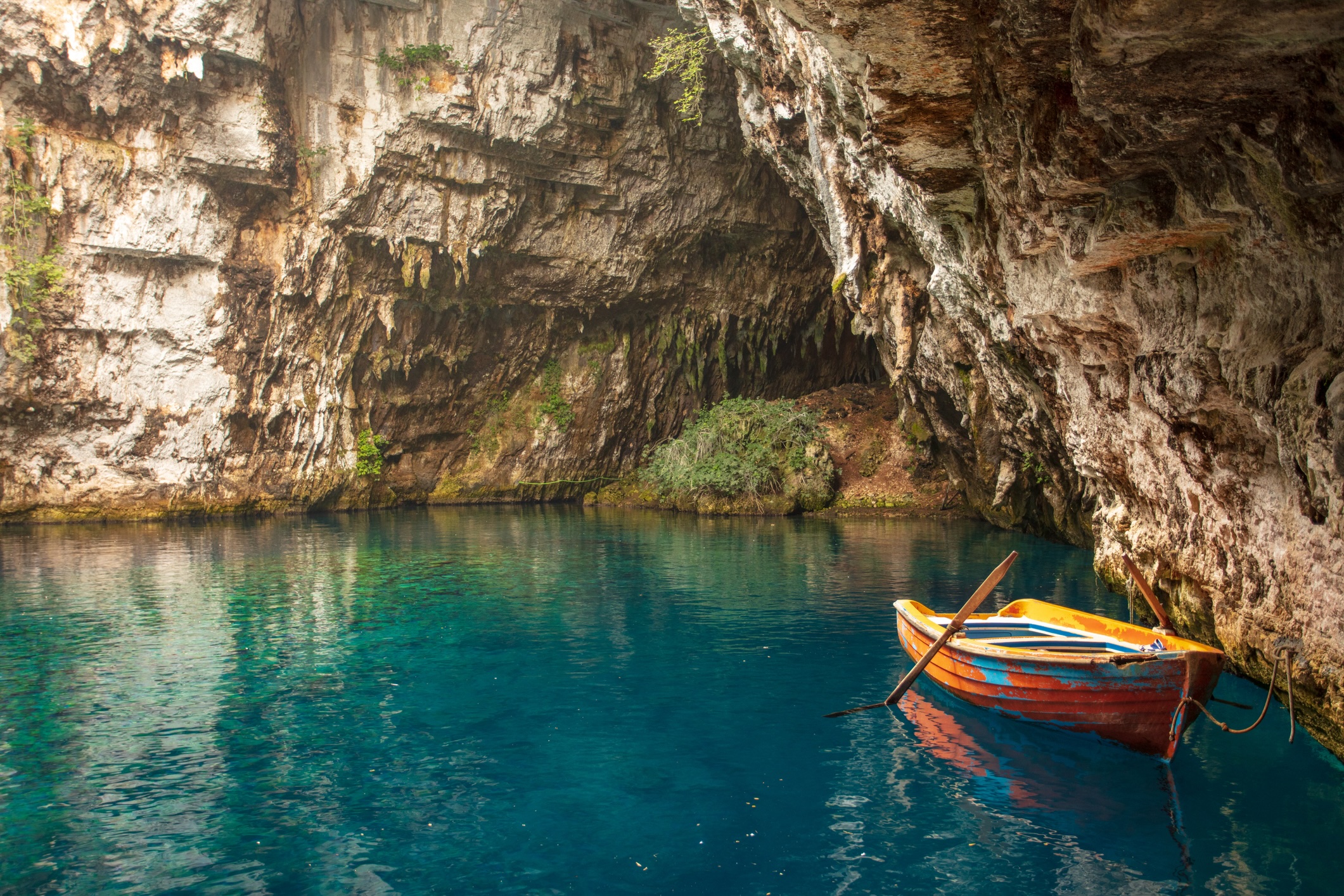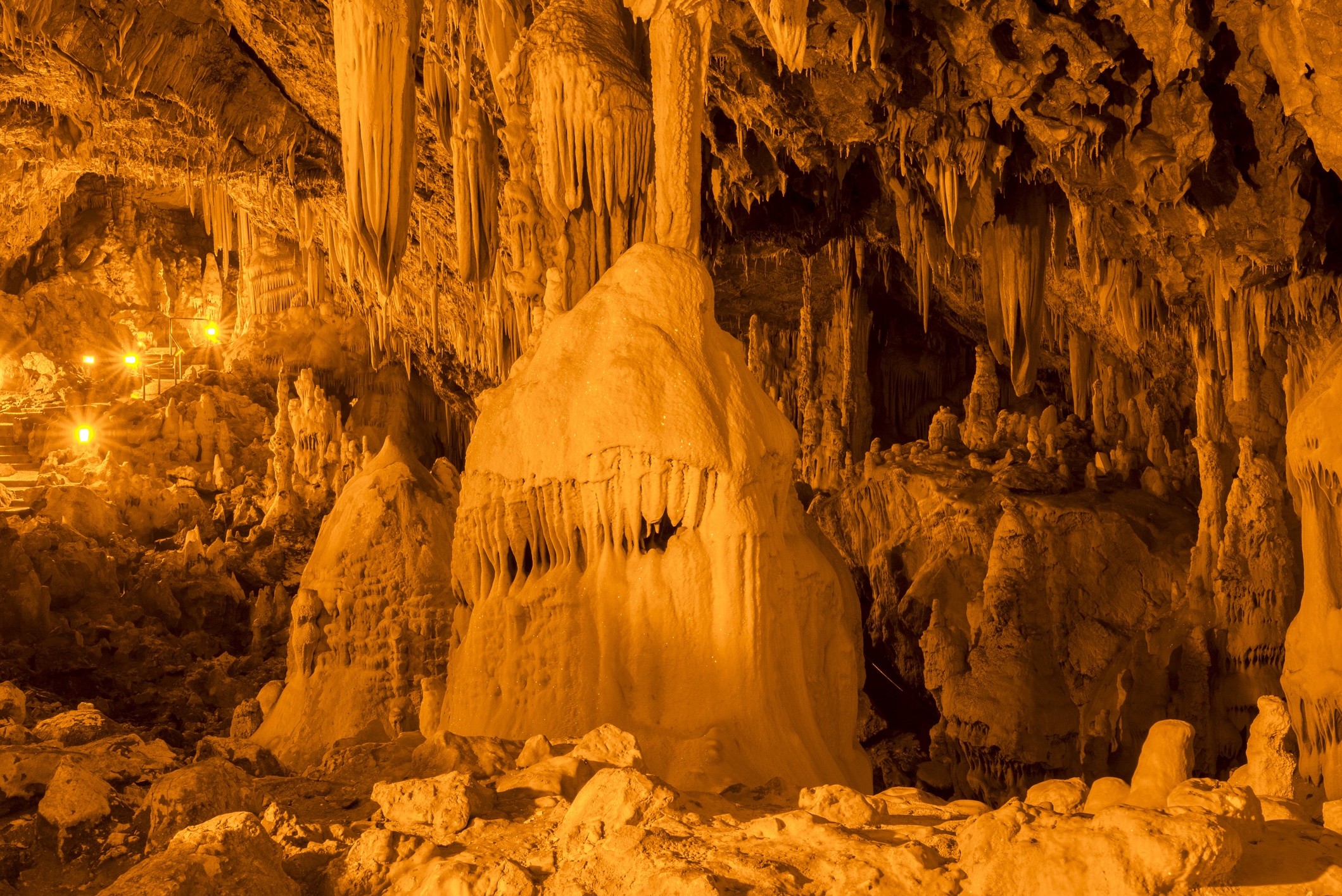Greece is renowned for its stunning landscapes, ancient ruins, and idyllic islands, but beneath the surface lies a hidden world waiting to be explored. Caving, or spelunking, in Greece offers adventurers the opportunity to discover some of the most fascinating and mysterious underground wonders. From ancient caves steeped in mythology to breathtaking formations created over millennia, Greece’s caves provide a unique and thrilling experience for those willing to venture into the depths. Here’s a guide to some of the most captivating caves in Greece and what you can expect when exploring them.

1. Diros Caves: The Subterranean Marvel of Mani
Located in the Mani Peninsula of the Peloponnese, the Diros Caves (also known as Glyfada Caves) are among the most famous and beautiful caves in Greece. These caves were first explored in the 1940s, and they quickly became known for their extraordinary stalactites and stalagmites, as well as the crystal-clear underground lakes.
- Exploring the Caves: The Diros Caves are explored primarily by boat, as a large part of the cave system is submerged. As you glide through the narrow passages on a guided tour, you’ll be surrounded by stunning rock formations that have been sculpted by nature over thousands of years. The atmosphere inside the caves is surreal, with the reflections of the stalactites shimmering on the water’s surface.
- What to Expect: The boat ride through the caves lasts about 30 minutes, followed by a short walk through the dry sections of the cave. The temperature inside the caves remains cool year-round, making it a refreshing escape during the hot summer months.
Tip: Wear comfortable shoes with good grip, as the paths inside the cave can be slippery. Photography is allowed, but flash is discouraged to preserve the natural beauty.

2. The Cave of the Apocalypse: Spiritual Journey on Patmos
The Cave of the Apocalypse on the island of Patmos is not only a geological wonder but also a site of immense religious significance. According to Christian tradition, this is where Saint John the Theologian received the visions that he recorded in the Book of Revelation. As a result, the cave has been a place of pilgrimage for centuries and is a UNESCO World Heritage site.
- Exploring the Cave: The cave is part of a larger monastic complex, and visitors enter through a chapel dedicated to Saint John. Inside, the cave retains a sacred and tranquil atmosphere, with religious icons and a spot where John is believed to have rested his head while writing the Revelation.
- What to Expect: The Cave of the Apocalypse is a place of worship, so visitors are expected to dress modestly and behave respectfully. Guided tours are available, providing insight into the religious history and significance of the site.
Tip: Combine your visit to the cave with a trip to the nearby Monastery of Saint John, which offers panoramic views of Patmos and houses a museum with religious artifacts.

3. Melissani Cave: The Enchanted Cave of Kefalonia
Melissani Cave, located on the island of Kefalonia in the Ionian Sea, is often referred to as the “Cave of the Nymphs” due to its ethereal beauty. The cave features a stunning underground lake with waters that change color from deep blue to turquoise, depending on the time of day and the angle of the sunlight.
- Exploring the Cave: Visitors to Melissani Cave enter through a tunnel and are then taken on a boat ride across the lake. The cave’s roof partially collapsed centuries ago, allowing sunlight to flood in and create a magical play of light on the water. The experience of floating through the cave, with the sunlight illuminating the waters beneath you, is truly unforgettable.
- What to Expect: The boat ride through the cave lasts around 15 minutes, and the guides provide interesting commentary on the history and mythology associated with the cave. The best time to visit is around midday when the sunlight is directly overhead, creating the most dramatic lighting effects.
Tip: Visit Melissani Cave early in the morning or late in the afternoon to avoid the crowds, especially during the peak summer months.
4. Alistrati Cave: A Hidden Gem in Northern Greece
Located near the town of Serres in Northern Greece, Alistrati Cave is one of the largest and most impressive caves in the country. The cave is famous for its extensive network of tunnels and chambers adorned with stunning stalactites, stalagmites, and rare helictites (curved formations that seem to defy gravity).
- Exploring the Cave: Alistrati Cave offers a well-organized guided tour along a 1-kilometer path, taking you through various chambers and highlighting the cave’s most striking formations. The cave is known for its remarkable acoustics, and some chambers are occasionally used for musical performances.
- What to Expect: The tour lasts about an hour, and the cave’s constant temperature of around 18°C makes it comfortable to explore year-round. The pathways are well-lit and accessible, making it suitable for visitors of all ages.
Tip: Pair your visit to Alistrati Cave with a trip to the nearby Aggitis River Cave (also known as the Cave of the Springs of Aggitis), another fascinating cave system with an underground river.

5. Perama Cave: The Underground Marvel of Ioannina
Perama Cave, located just outside the town of Ioannina in northwestern Greece, is an extensive cave system that stretches for over 5 kilometers. Discovered during World War II, the cave is now a popular tourist attraction, known for its diverse array of stalactites and stalagmites.
- Exploring the Cave: The guided tour of Perama Cave takes you through a series of chambers filled with intricate formations. Highlights include the “Hall of the Cross” with its cross-shaped stalagmite and the “Royal Hall,” where massive stalactites hang from the ceiling like chandeliers.
- What to Expect: The tour lasts about 45 minutes, covering a distance of around 1 kilometer. The cave maintains a constant temperature of around 17°C, making it a pleasant escape from the summer heat.
Tip: After visiting Perama Cave, explore the nearby town of Ioannina, known for its picturesque lake, historic castle, and vibrant cultural scene.
Conclusion: Unveil the Hidden Depths of Greece
Caving in Greece offers a unique perspective on the country’s natural beauty and rich history. Whether you’re gliding through the subterranean lakes of Diros, exploring the spiritual depths of the Cave of the Apocalypse, or marveling at the colorful waters of Melissani, each cave provides a different adventure and a deeper connection to the land. For those who seek a blend of adventure, history, and natural wonder, Greece’s caves are an unforgettable destination. So, grab your sense of curiosity and a spirit of exploration, and set off to discover the mysteries beneath the surface of this ancient land.











